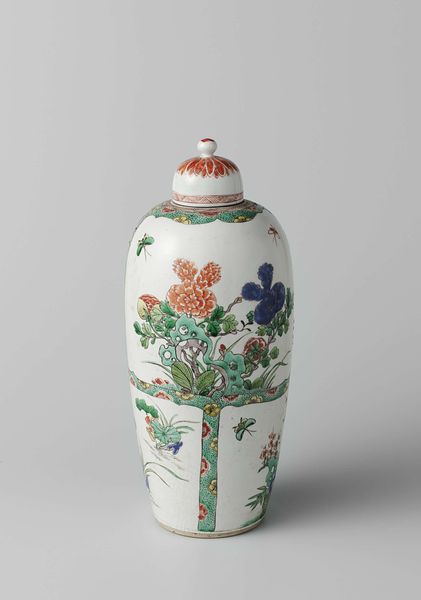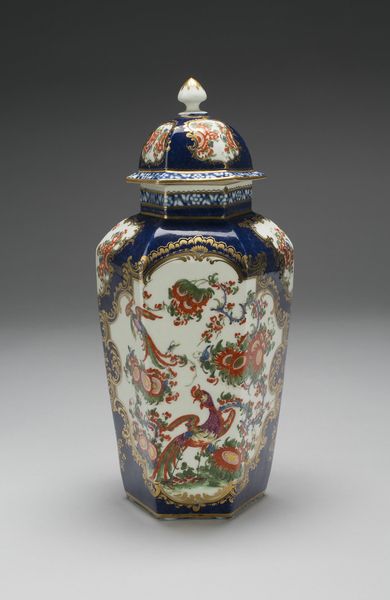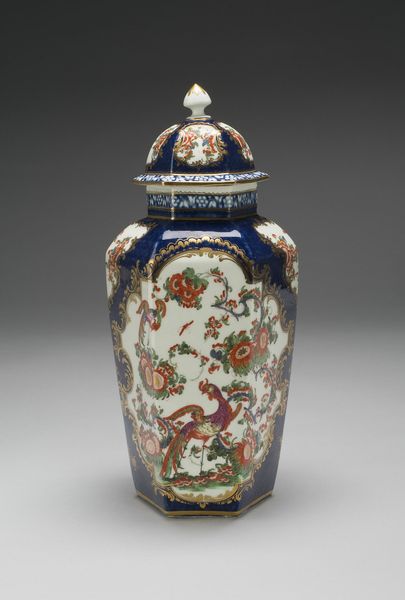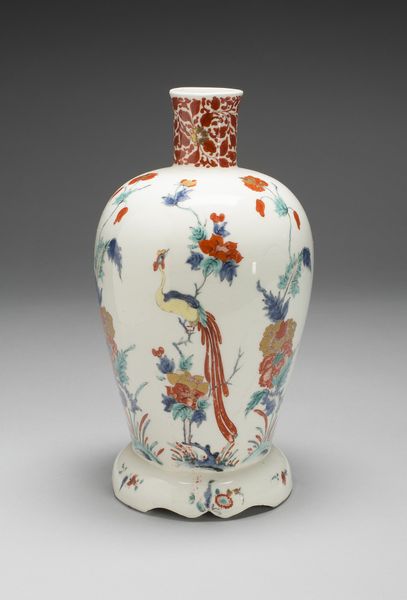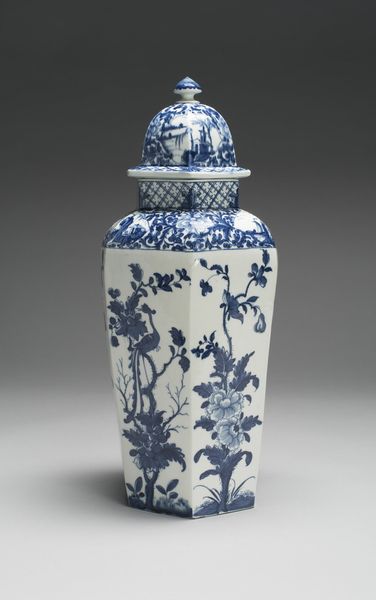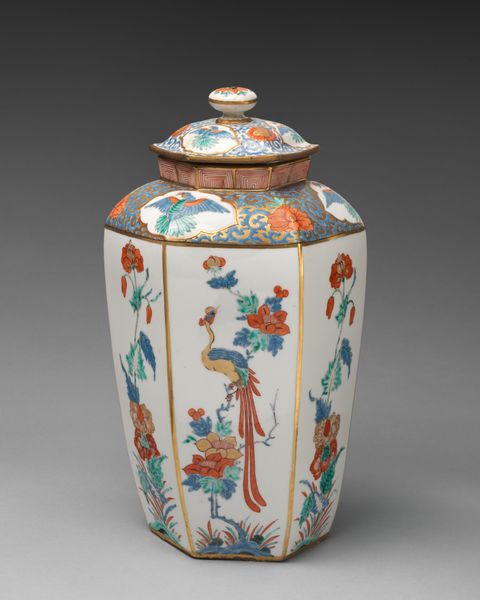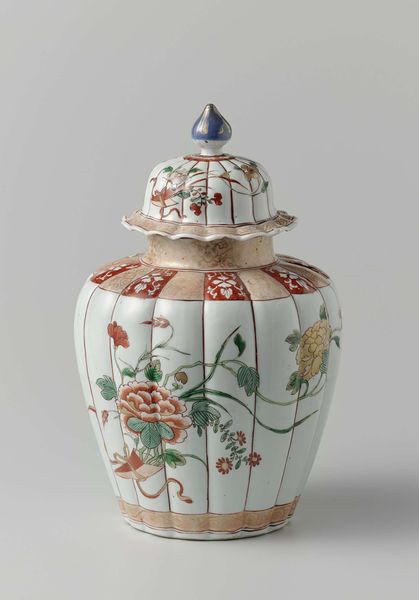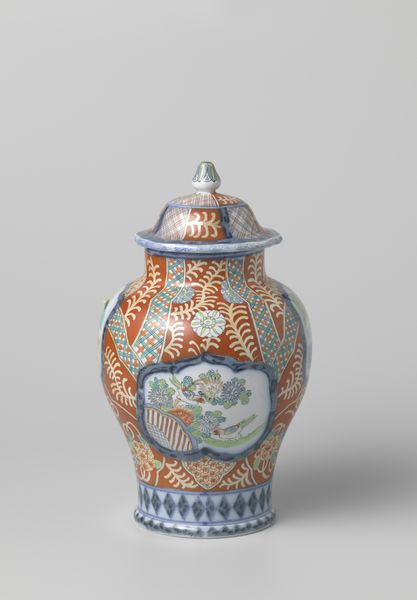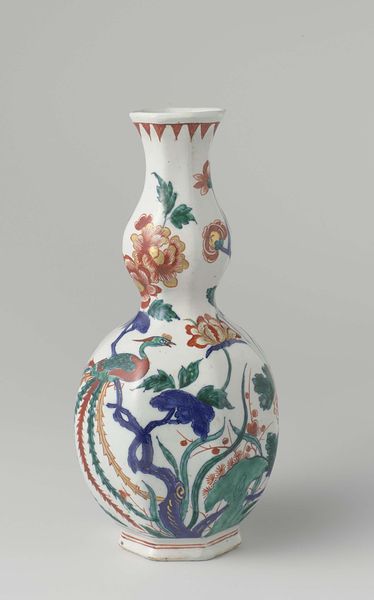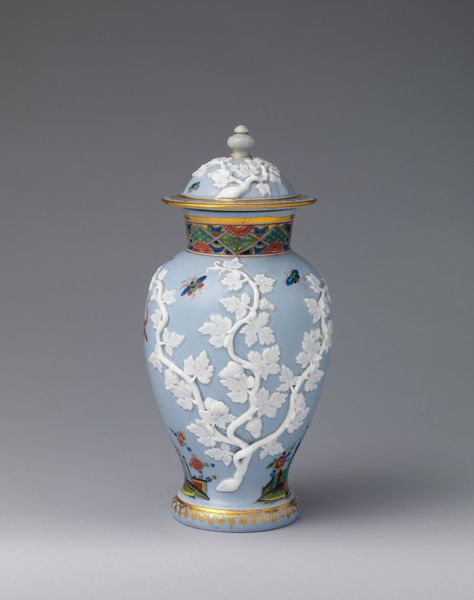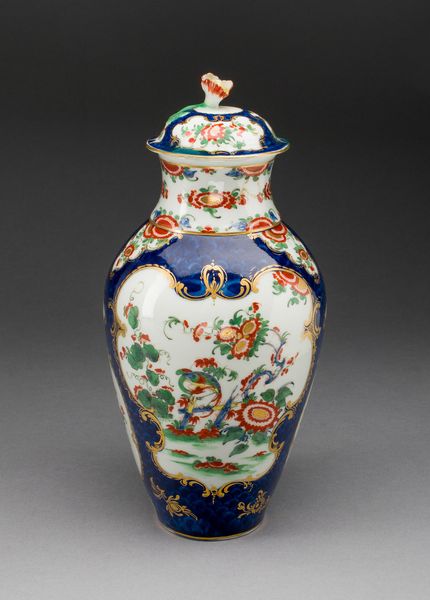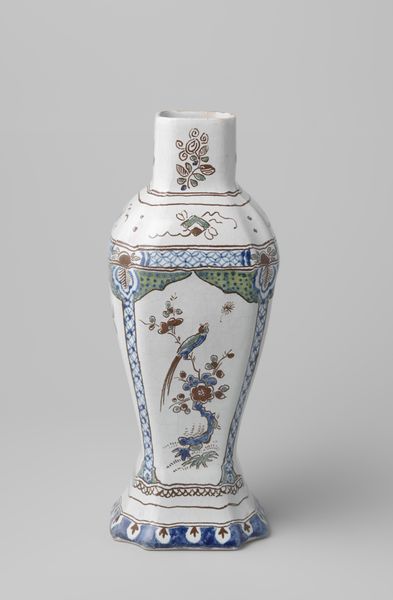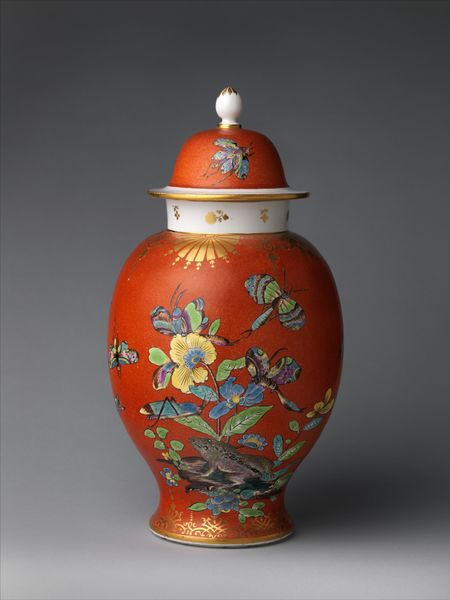
Baluster covered jar with pheasants on a rock near a fence and flowering plants c. 1750 - 1780
0:00
0:00
ornament, ceramic, porcelain, earthenware
#
ornament
#
asian-art
#
ceramic
#
porcelain
#
earthenware
#
stoneware
#
orientalism
#
ceramic
Dimensions: height 107.5 cm, diameter 28.5 cm, diameter 50 cm
Copyright: Rijks Museum: Open Domain
This impressive baluster jar, made of painted porcelain by an anonymous artist, is a testament to the global reach of Chinese export wares. The jar's size alone speaks to the immense labor involved in its creation. From the mining and preparation of the clay, to the skilled throwing of the vessel on a wheel, to the delicate painting of its surface, each stage demanded expertise and time. The smooth, even surface betrays countless hours of work. The painted decoration – pheasants amidst flowering plants – reflects a blend of Chinese aesthetics and the tastes of European consumers. These export wares became popular goods in the West, a symbol of global trade. It is important to consider the human cost of this exchange, as the production of porcelain often relied on intensive labor. By appreciating the materials, making, and global context of this jar, we can understand the rich history embedded within its form, and challenge traditional distinctions between luxury and labor.
Comments
No comments
Be the first to comment and join the conversation on the ultimate creative platform.
